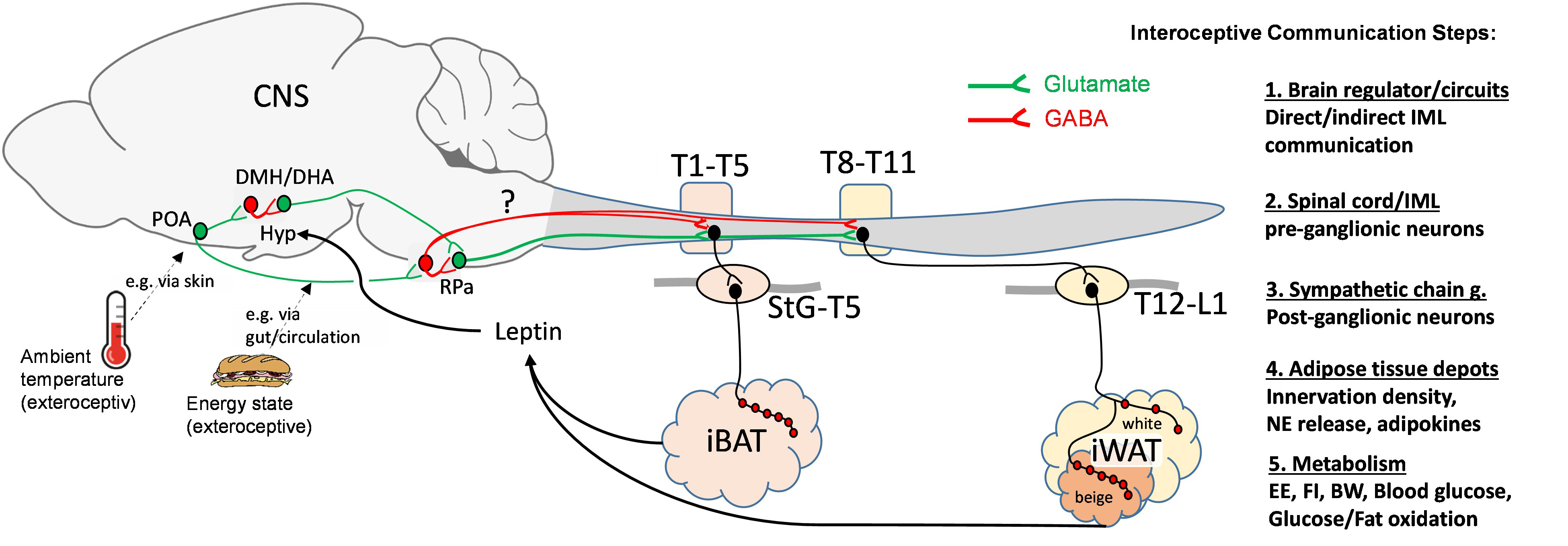Central Leptin Signaling
Faculty
Research Focus
The primary focus of the lab is to understand the logic of neuronal circuits in the brain and periphery that allow physiological adaptations to environmental challenges, such as ambient temperature, fasting and overfeeding. The leptin signaling system serves as the model system for homeostatic regulation.
These neuronal circuits are critical for maintaining homeostasis for body weight, body temperature or blood glucose levels. The main goal is to understand how successful weight loss strategies, such as bariatric surgery or GLP1 receptor agonist medication, can override those natural adaptation to allow weight loss.
About this Lab

The lab pursues insights into the neural circuits through two major projects. In the first, lab members explore brain circuits that control the physiological adaptation of energy expenditure and food intake, such as ambient temperature changes and food availability.
In the second project, lab members explore novel components, such as the brain, spinal cord and peripheral nervous system, that regulate adipose tissue function and the secretion of the interoceptive signal leptin. This important brain-to-fat axis impacts or predisposes for many brain disorders like obesity, learning and memory deficits, substance abuse, mental illness like depression, and neuropathic pain.
The lab uses a variety of molecular genetic and viral approaches, including in vivo chemogenetics, optogenetics, fiber photometry, to dissect central or peripheral neuronal circuits that are involved in energy expenditure and food intake adaptation. Members use 2D and 3D histology staining and tissue clearing to visualize central circuts, such as hypothalamic and spinal cord, and peripheral neuronal circuits, such as sympathetic pre-and postganglionic neurons and adipose tissues.



